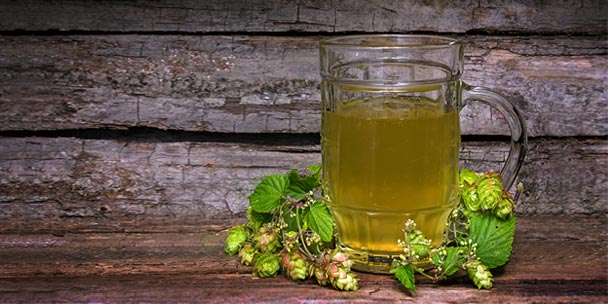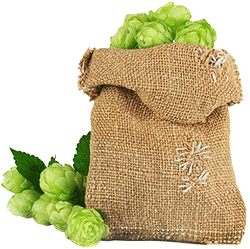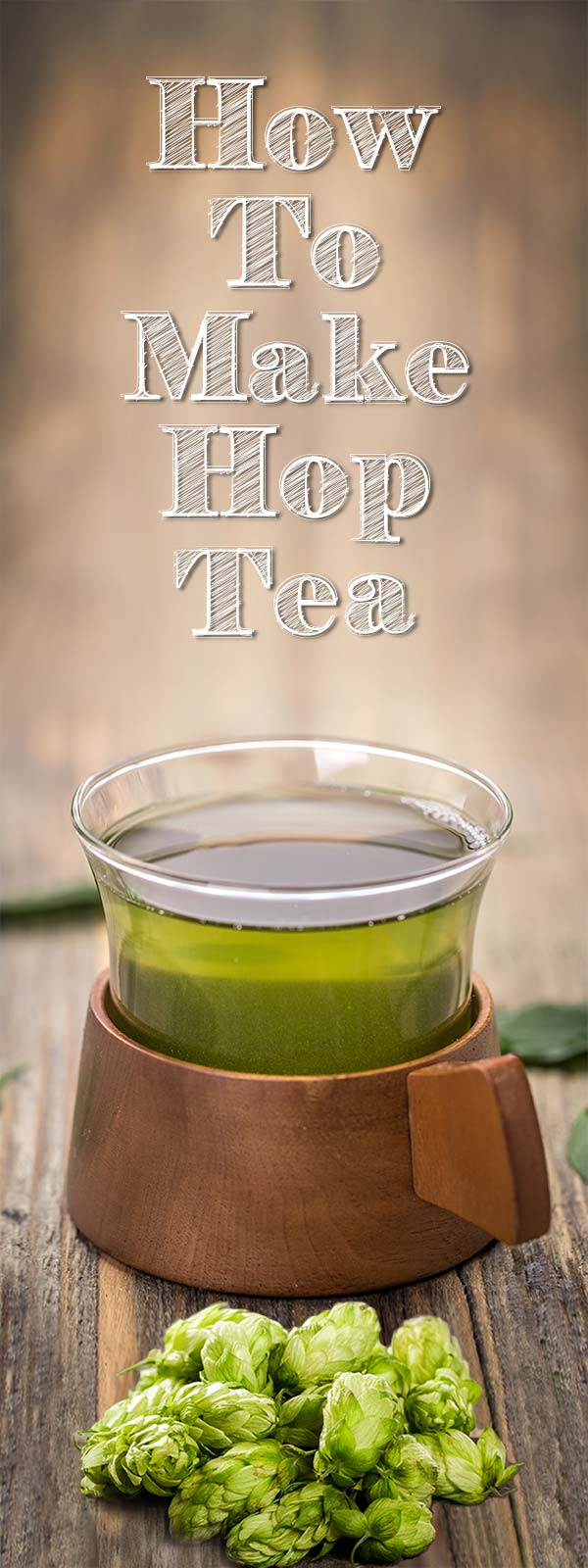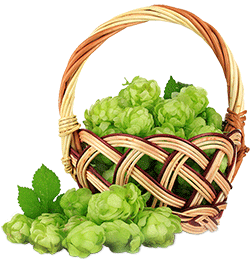
Hops are a brewer’s best friend. Whether added to the mash, boil, or fermenter, they impart distinctive flavors to beer which cannot be duplicated any other way. What a lot of brewer’s don’t know—or haven’t tried—is that their favorite hops can also be used in other ways.
One of my favorite non-beer ways to use hops is to make hop tea. Hop tea is exactly what is sound like. You steep hops in hot water and then drink the result. As we’ve previous discussed, this is a great method to evaluate the aromas and flavor components of a new hop you’ve never used, but drinking hop tea is reported to have many health benefits, as well.
A Little History
Originally, beer was brewed with a blend of herbs called gruit. Gruit imparted bitterness and flavor to the beer much in the way hops do now, but without the preservative qualities of hops. In addition, the Archbishop of Cologne, Germany had monopolistic rights to the production and distribution of gruit for use in beer.
These shortcomings soon made it possible for hops to be introduced as an alternative to gruit, as it could be grown easily and acquired without going through the Archbishop. The hop plant’s antimicrobial benefits also allowed for longer storage and shipping of beer, which helped it to gain popularity among brewers.

Overall, hops had several advantages over gruit when it came to being the best beer addition:
- Hops are an excellent preservative.
- The preservative qualities allow for longer storage.
- These same qualities allow for shipping over greater distances.
- Hops act as a fining agent, clearing the beer.
- Hops aid in head formation and retention.
- Hops add a distinctive flavor to beer which is not easily duplicated.
Eventually, hops took over as the bittering addition of choice in Europe, and it has enjoyed that honor ever since. By the late 16th century, all of Europe favored the hop over other bittering alternatives.
Health Benefits of Hops
Due to the popularity of brewing your own beer, hops are no longer used for a lot of the things they once were. Because of their anti-inflammatory and sedative properties, hops were used in medicine for a very long time. They can be taken orally for these purposes, but they can also be infused in teas. You can even purchase pillows which are stuffed with hop cones, which is said to help aid with insomnia. They are also used in cosmetics, such as natural soaps and deodorants.
Other benefits of hop tea as medicine include the fact that they are high in antioxidants, they are phytoestrogenic, antiviral and antimicrobial, anti-carcinogenic, and may help in the treatment of diabetes symptoms.
In addition to medicinal and cosmetic purposes, hops are decorative. Their flowers are used in brewing, but they have been used as a garland or in floral arrangements for centuries in Europe. Planting a hop bine next to your house will allow it to climb, presenting a lush green look, as well.
Hops can also be eaten as food. The young bines, when trimmed from the plant, are often used in salads, but some homebrewers grill or bake them as they would asparagus. In addition to being added directly to a person’s diet, hops are also used as an antimicrobial agent in food processing and storage, including the production of ethanol fuel.
Hops’ Use in Tea
Hops have been used in tea at least as long as they have been used in beer. Hop tea is often used as a sort of bedtime tea due to its natural sedative properties.

If you intend to drink hop tea, it is important to note that modern hops can be very bitter. For that reason, you may want to consider sweetening the tea with honey, agave nectar or another sweetener, especially when using a hop with a high alpha acid content.
For best results, use a hop with low alpha acids but that has a good flavor and aroma profile that you like. Homebrewers typically have a good idea of what hops they like best as an aroma addition in their beer, and I recommend sticking with those. Dual-use hops can be pretty high in alpha acids, so tread lightly if the alpha acid content is above 5%.
Due to a resurgence in the popularity of hop tea that has coincided with the homebrewing movement, there has even been a new hop variety released with tea in mind. The ‘Teamaker” hop was released in 2008 by the ARS Forage, Seed, and Cereal Research Unit in Corvallis Oregon.
The teamaker hop has very low alpha acid levels and very high beta acid levels. This results in a more pleasant bitterness profile. In addition, the Teamaker hop also has a high concentration of spicy, floral aroma oils which make for a much better cup of tea.
Make it Hot
The first step of making hop tea is to choose your hops. Pick a hop that has low alpha acids and high beta acids, if possible. Pay attention to the aroma descriptors for the different varieties of hops. For instance, Cascade hops are often described as flowery, with citrus and grapefruit. Brewer’s Gold is often described as having black currant aromas, and so does Willamette, though Willamette hops are milder. Meanwhile, Fuggles and Hallertau are milder, with a more earthy aroma that is pleasant.
Making hop tea is easy. For your first time making tea, choose a low alpha acid hop that you enjoy and add a small amount (about a quarter ounce for 8 ounces of tea should be ample) to a tea ball, strainer, or French Press. For teamaking purposes, I highly recommend using whole cone hops, though you can make tea with pellets, as well. Pellets can cause a problem when using a French Press, as the hop materials can pass through the screen. For that reason, I recommend a tea bag for hop pellets.

Heat 8 ounces of water to boiling and add to the French Press or cup with the tea ball. Allow the tea to steep for a few minutes, and then remove by straining or pressing. Sweeten the tea to taste using honey or the sweetener of your choice.
Add ons
In addition to hops, you may find you want to add some other flavors to your tea. Feel free to add complementary flavors to the tea. Experiment with citrus peels, chamomile, lemongrass, lemon balm, or other herbs as you like. Ginger can be a nice addition, as well.
Hop tea isn’t for everyone. Some homebrewers are not a fan of how bitter hops taste without the malt, but with a little trial and error, you might just find your new favorite tea. Happy brewing.
from kegerator